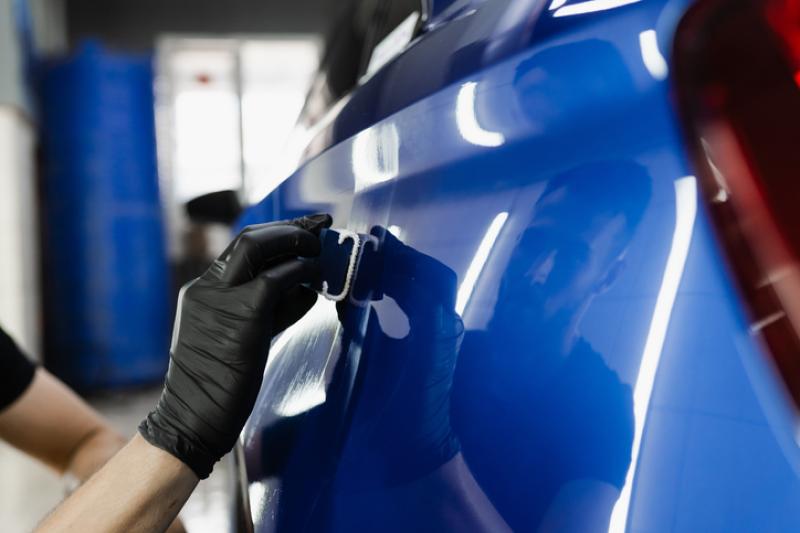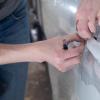What's the Best Paint Protection Film for My Car?

Paint protection film is an essential part of car maintenance that gets disregarded too frequently. You may prevent scratches and dings in vulnerable parts of your car's body by applying a clear paint protection film. As a preventative measure against road debris including stone chips and insect goop, some car owners choose to install the film on their vehicle's front end. It's also useful for protecting the car's paint in other vulnerable spots, such as door sills and rocker boards.
Paint protection film may be installed by a professional or by the homeowner. Shopping online for paint protection film is preferable to doing so at a local auto parts shop since the price is lower, and there is a wider variety of films to pick from. So, which films provide the greatest protection for automobile paint, and why do these particular films excel? If protective windshield film (PPF) is something you're considering for your car, there's some stuff you should know before making a final decision.
What Qualities Should You Look for in a Quality Paint Protection Film?
Quality transparent films are made up of four different materials that work together to create the final product:
- Liner for polyester release
- Polyurethane
- Polished coat
- Polyester resin adhesive
Around 3.0 ml is the thickness of the polyester release liner. This is the base coating that adheres to the body of an automobile. The acrylic glue sits above it and is about six (6) mils thick. Following this comes a coating of polyurethane, likewise around six mils in thickness. What gives the transparent bra its added thickness, support, and safety, respectively? The last layer is a glossy clear coat, which is around 0.5 mils thick.
Manufacturing
The paint protection film is made mostly of urethane, a robust and adaptable polymer. It can withstand high levels of stress without breaking, is transparent, and is impervious to weathering and corrosion.
In order to prevent further losses of U.S. helicopters due to broken rotor blades, urethane technology was first developed during the Vietnam War. For the sake of saving lives, money, and helicopters, 3M and the military collaborated to develop and produce this technology.
Later in the 1970s, urethane film's applications grew to include fighter planes, and it has since found a plethora of other uses. Due to the technology's effectiveness, it is still produced today.
Superior Safety Measures
The primary benefit of the automotive paint protection film is the protection it affords vehicles. The finest coatings provide an exceptional shield against environmental threats including ultraviolet light, oil, pests, and scratches caused by pebbles, dirt, and flying debris.
The optimal thickness of PPF for maximum defence is about 6 ml (not including the adhesive, clearcoat, or release liner). Worse-quality films tend to be thinner.
Transparency
The protective film's only intent is to preserve the paint's like-new appearance; it is not meant to obscure, distort, or otherwise alter the paint's appearance. The clarity of high-quality automotive films is unimpaired by time or use.
Earlier iterations of PPF yellowed with time, but scientists soon figured out that it wasn't the film itself that was aging but the adhesive. Adhesives that won't fade too quickly have been created since then.
Durability
The highest-quality films are those with the longest and most comprehensive guarantees available. For instance, XPEL Ultimate employs Edge Seal Technology to hold the film in place, minimizing the possibility of lifting and peeling, and comes with a warranty that lasts for 10 years after application.
Proper upkeep by the automobile owner and expert installation greatly increases the longevity of clear film. When properly maintained, the greatest professionally placed films can retain their lustre for well over a decade.
Capability to Heal Itself
A futuristic concept, if there ever was one. With self-healing paint protection coatings, the future is now. Heat applied to the film may remove minor damage such as scratches, scuffs, and even spray paint.
When heated, PPF transitions back to its low-energy state, in which it takes on a uniformly smooth and seamless look. Heat easily removes undesired items like spray paint or stickers without damaging the film's original gloss.
To have their brand-new car's paintwork pockmarked by rock chips after just a few weeks is an unwelcome sight for anybody. 3M absorbs the impact, so your car doesn't have to. The right technicians can install the finest paint protection film on your cars for a fraction of the cost of what the dealership would charge, saving you both time and money.
More to Read:
Previous Posts:



